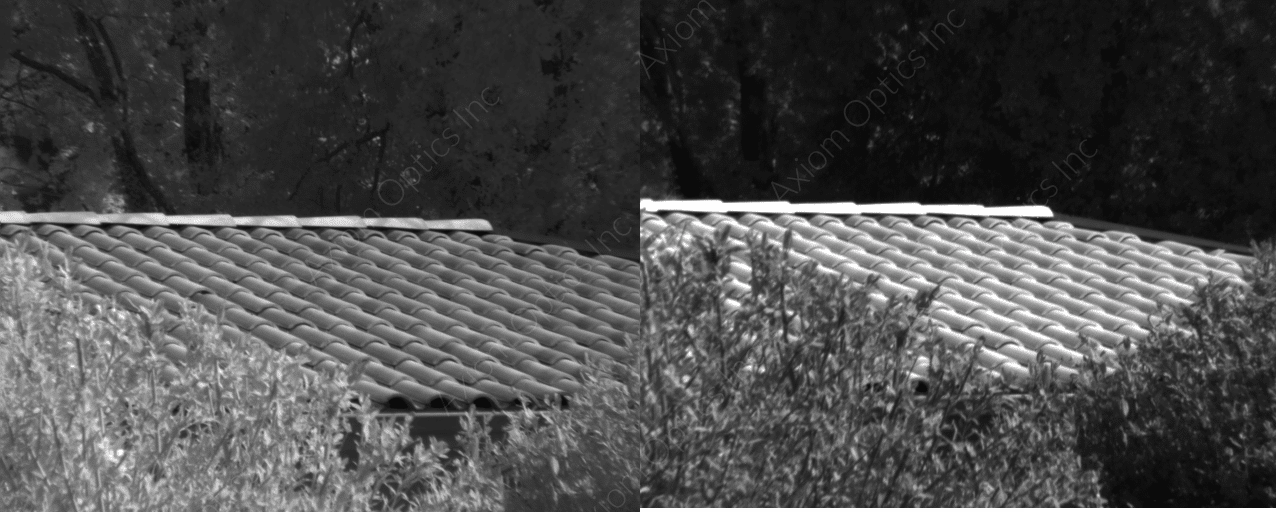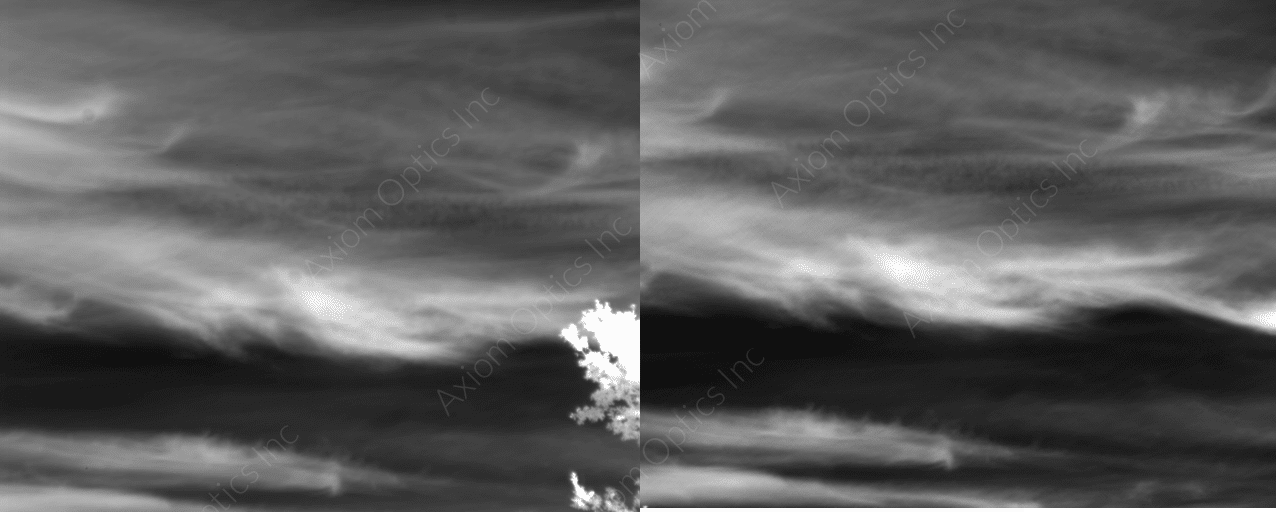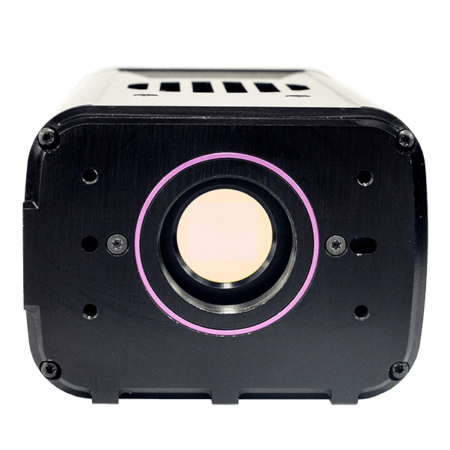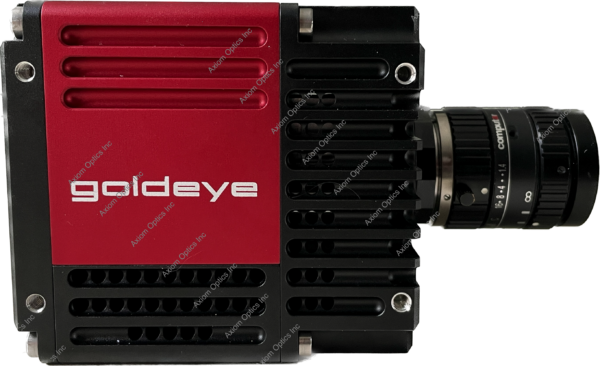
Extended SWIR InGaAs Imaging from 1300-2200 nm
The new Goldeye G-034 xSWIR 2.2 TEC2 integrates a 636 x 508 pixel extended range InGaAs sensor allowing imaging beyond the standard cut-off of 1.7 µm of more traditional InGaAs sensors currently on the market.
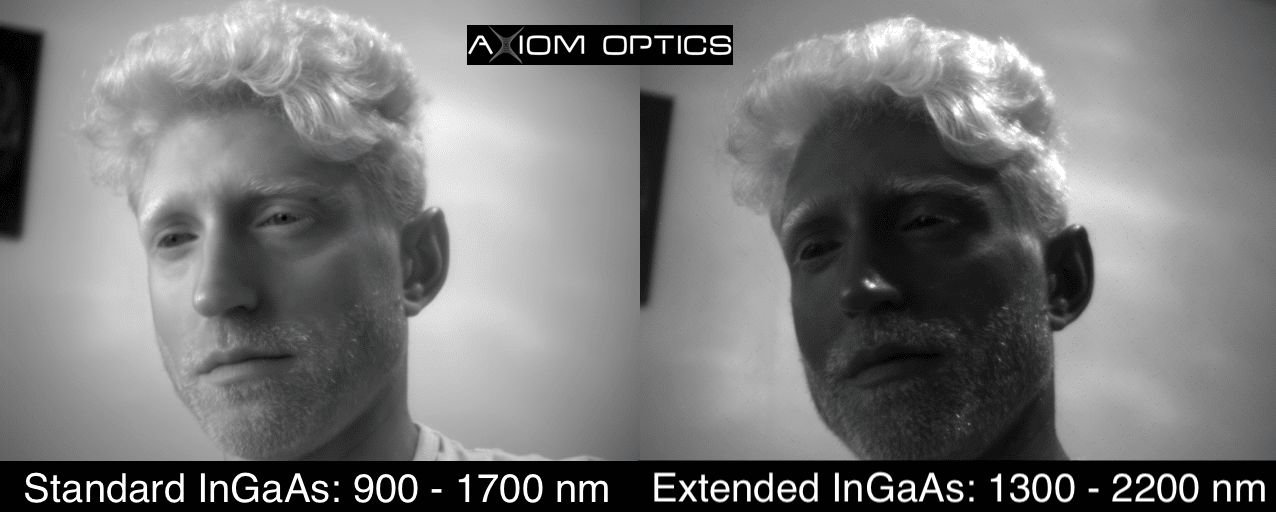
The sensor offers a high quantum efficiency of over 60% QE between 1340 and 2100 nm at -20ºC. The compact industrial design integrates a 2-stage thermo-electric cooling (TEC2) for a maximum cooling delta of 60K, thus dramatically reducing the dark current, which is much greater in this spectral range. NUC (non-uniformity correction) tables are factory calibrated and automatically applied for -30ºC, -20ºC and -10ºC temperature set points.
The camera boasts a max frame rate at max resolution of 180 Hz in 14-bit, 238 Hz in 12-bit packed and up to 303 Hz in 8-bit mode. The already fast speed of the sensor can be further increased by applying the multi-line/multi-AOI (area of interest) readout feature. For example, in combination with a spectrometer, it is possible to select only the relevant wavebands and to further reduce the image processing time.
Typical applications include:
- Spectrometry
- Hyperspectral imaging
- Recycling / sorting
- laser beam profiling / optical alignment
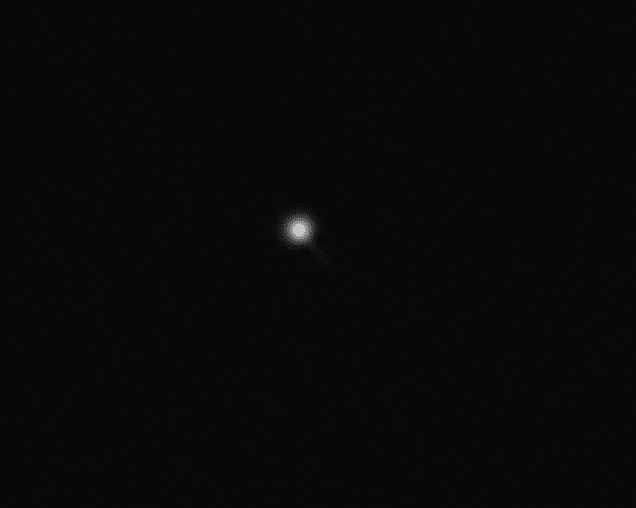
- small animal imaging with emission around 2 µm
As with all Goldeye cameras:
- GenICam compliance and comprehensive software support provide you a plug & play feeling when setting up your system
- Robust housing with multiple mounting options and comprehensive I/O control options ease the integration into your imaging system
- 3 years warranty
For more information, visit our SWIR Imaging application page.
More info on the manufacturer’s website.
You might also check the Goldeye G-034 XSWIR 1.9 TEC2 with spectral range of 1100 to 1900 nm.
Goldeye Extended SWIR QE Curve
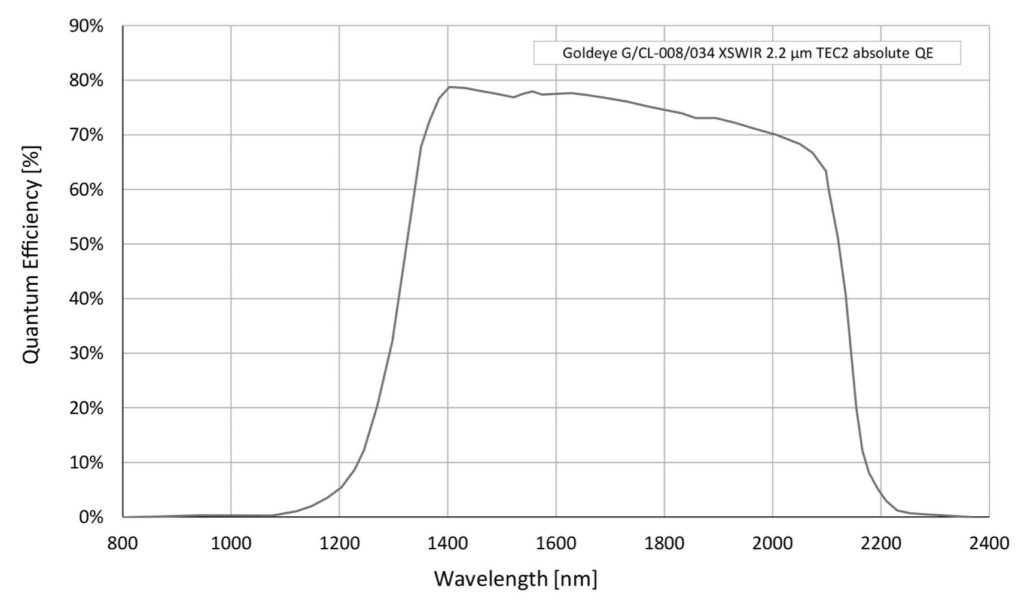
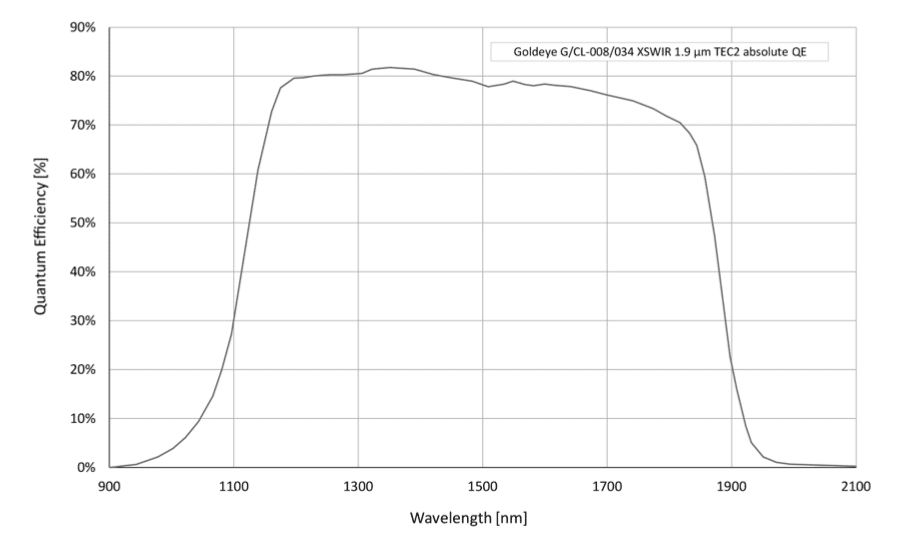
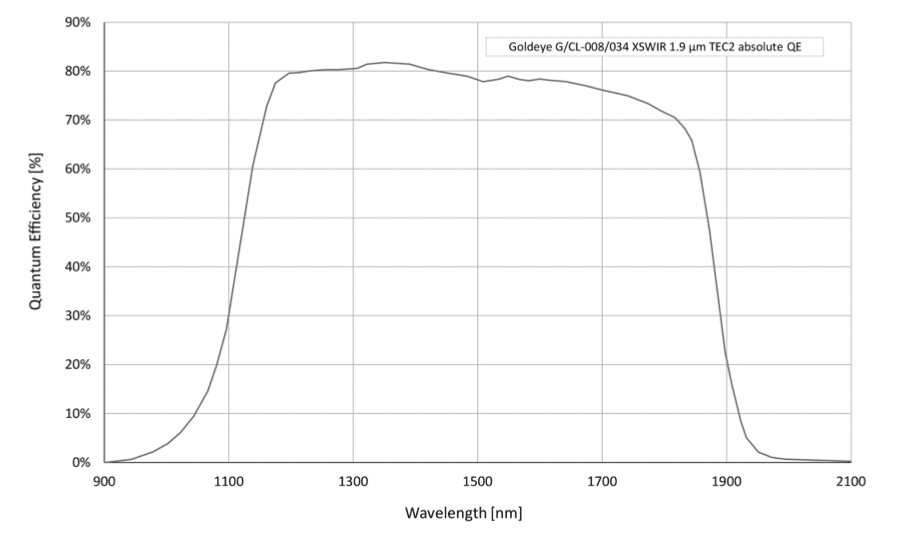
Extended InGaAs Applications
- Semi-conductor industry: solar cell and chip inspection
- Recycling industry: plastics sorting
- Medical imaging, sciences: hyper- and multi-spectral imaging, microscopy, optical coherence tomography (OCT)
- Metal and glass industry: thermal imaging of hot objects (250°C to 800°C)
- Agriculture industry: airborne remote sensing
- Printing industry: bank note inspection
- Electronics industry: laser beam profiling
- Surveillance and security: vision enhancement (for example, seeing through fog)
VIMBA SDK
Vimba is a comprehensive software suite:
- Acquire images and explore camera features without programming.
- Program your vision applications with C, C++, .NET or Python APIs.
- Connect to third-party libraries and frameworks.
Platform independent
Vimba 6.0 was tested with:
- Vimba for Windows 64-bit:
- Windows 10 (GigE, USB, 1394, and Camera Link cameras)
- Windows 11 (GigE, USB, and 1394 cameras)
- Vimba for Windows 32-bit:
- Windows 10 (GigE, USB, 1394, and Camera Link cameras)
- Vimba for Linux: Ubuntu 20.04 LTS (64-bit), Debian 11.2 (64-bit)
- Vimba for ARM64: NVIDIA Xavier NX with
- JetPack 4.6 (L4T 32.6.1) – GigE and USB cameras
From quick prototyping to sophisticated development
Vimba provides four APIs with extensive documentation and code examples:
The Python API is perfect for a quick and easy start or for prototyping.
The C API is Vimba’s basic and easy-to-use API. It can also be used as API for C++ applications.
The C++ API has an elaborate class architecture. It is designed as a highly efficient and sophisticated API for advanced object-oriented programming including the STL (standard template library), shared pointers, and interface classes. If you prefer an API with less design patterns, we recommend the Vimba C API.
The .NET API supports all .NET languages, for example, C#, C++/CLI, or Visual Basic .NET. Its general concept is similar to the C++ API.
All APIs cover the following functions:
- Listing currently connected cameras
- Controlling camera features
- Receiving images from the camera
- Notifications about camera connections or disconnections
The Image Transform Library converts camera images into other pixel formats and creates color images from raw images (debayering). While this is separated for the C and C++ API, the .NET API includes these functions. Therefore, a .NET application does not have to access the Image Transform Library. The APIs use GenICam transport layer (GenTL) libraries to communicate with the cameras.
Third-party libraries compatibility
Vimba’s transport layers automatically connect to third-party software, for example, LabVIEW, MATLAB, OpenCV, Halcon, CVB, and many more.
Lenses
The Goldeye xSWIR camera is compatible with:
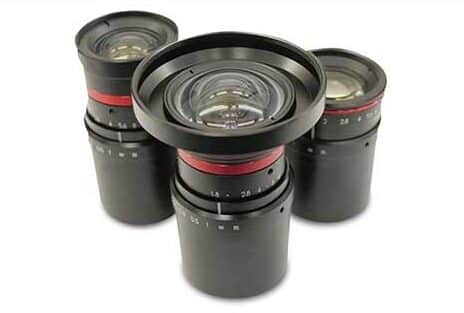

To view other available SWIR lenses, click HERE.

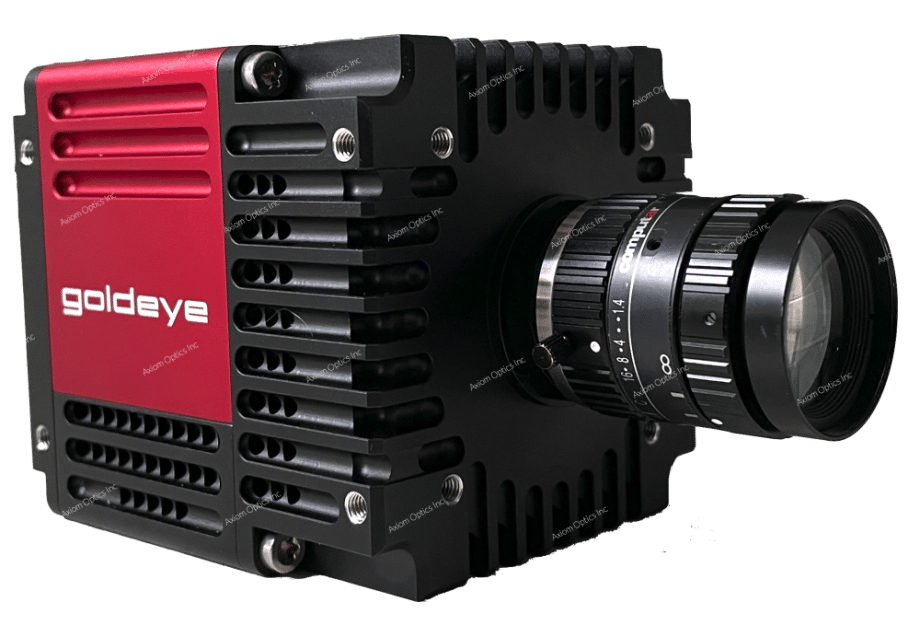
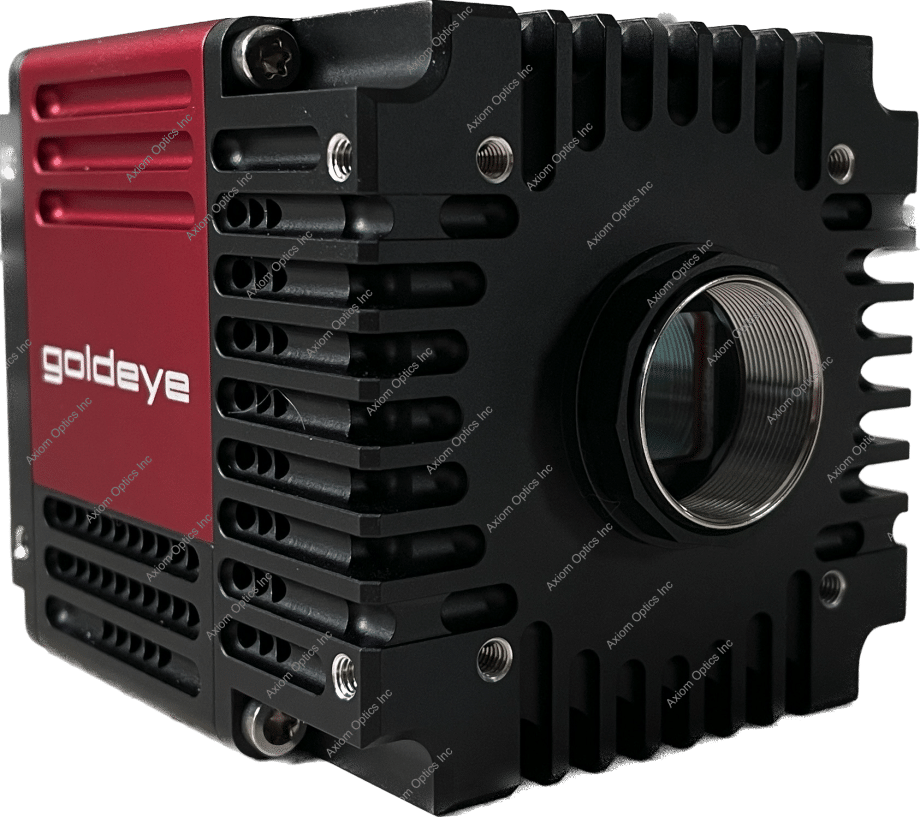
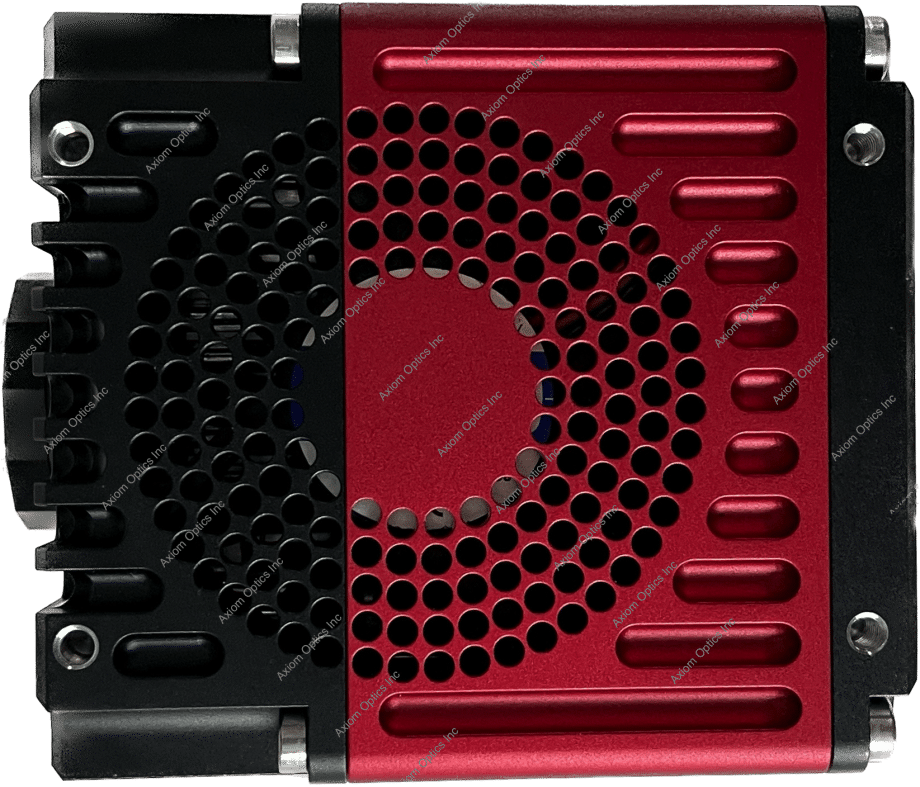
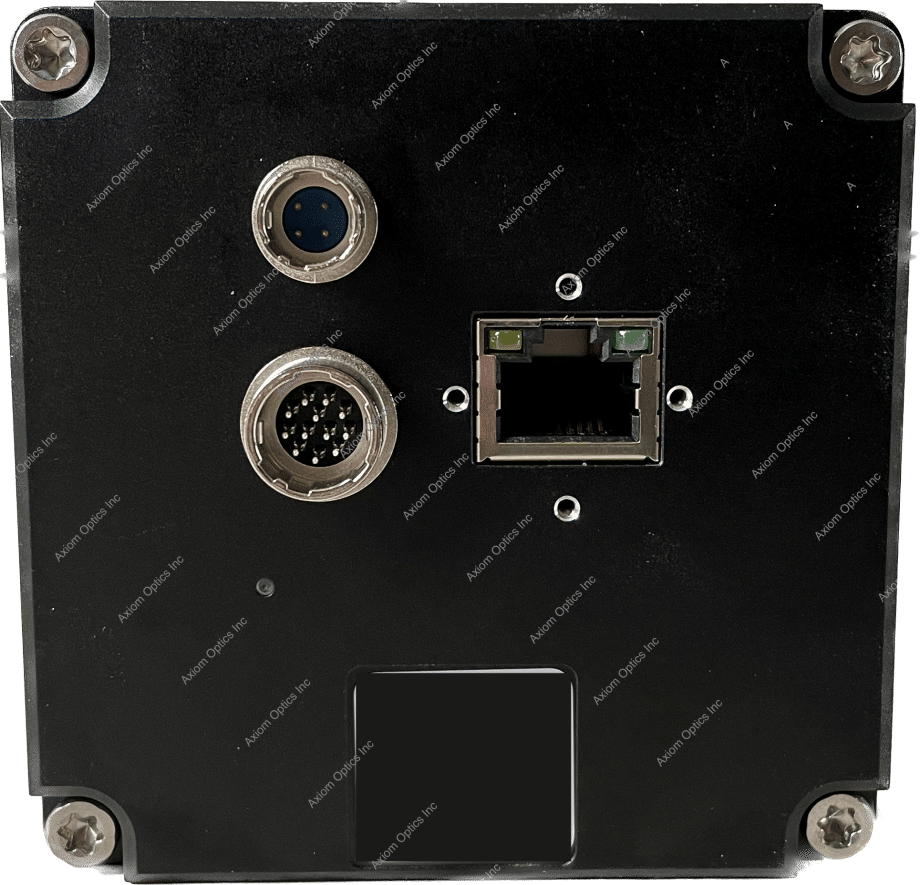
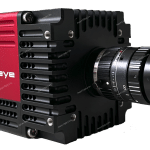
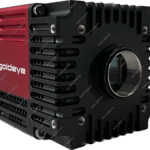
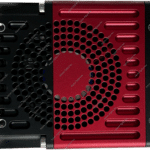
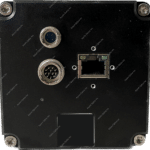
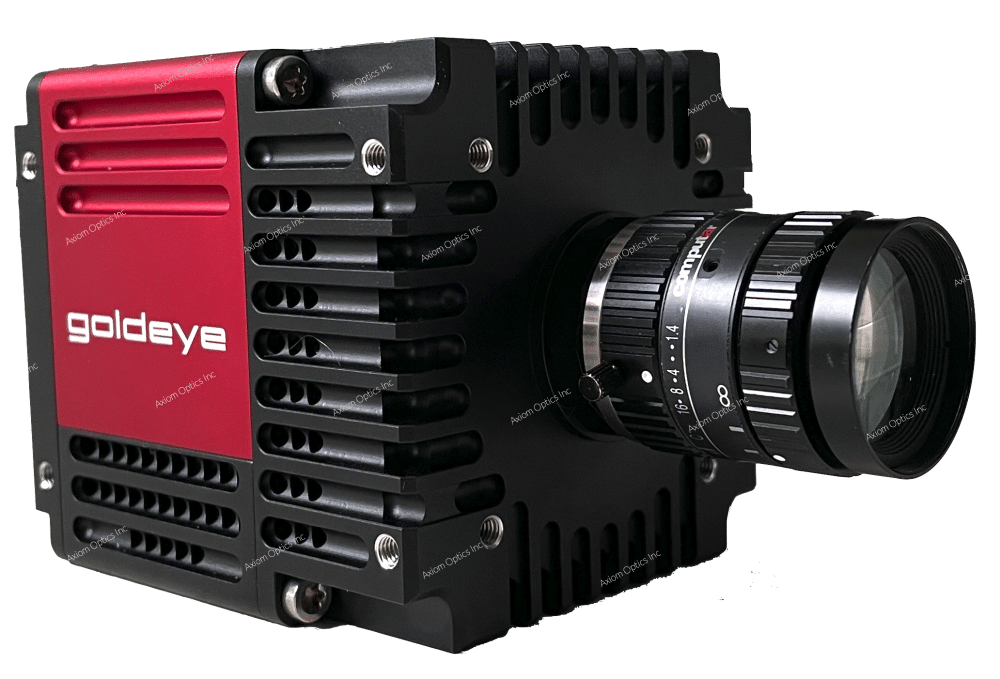
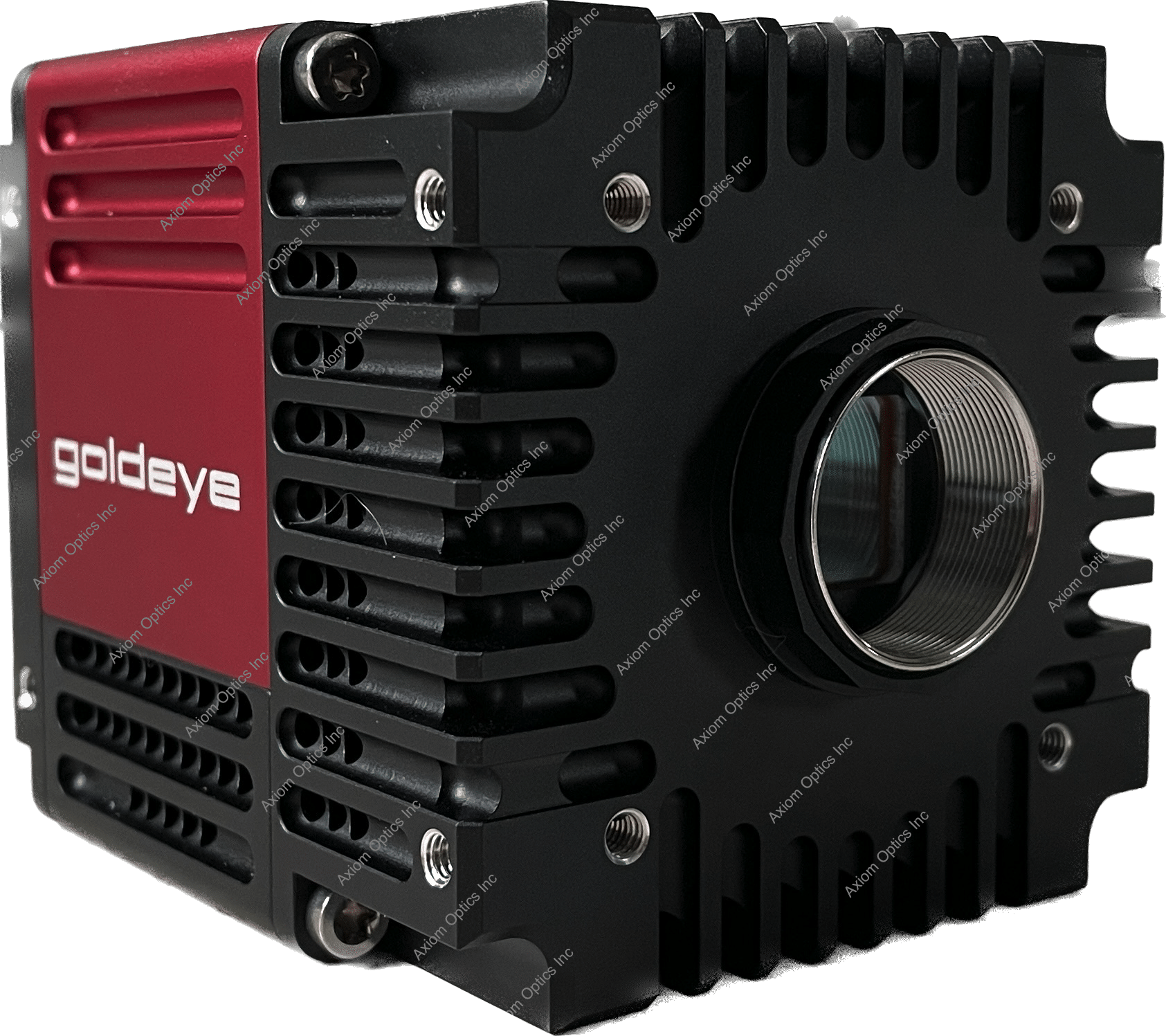
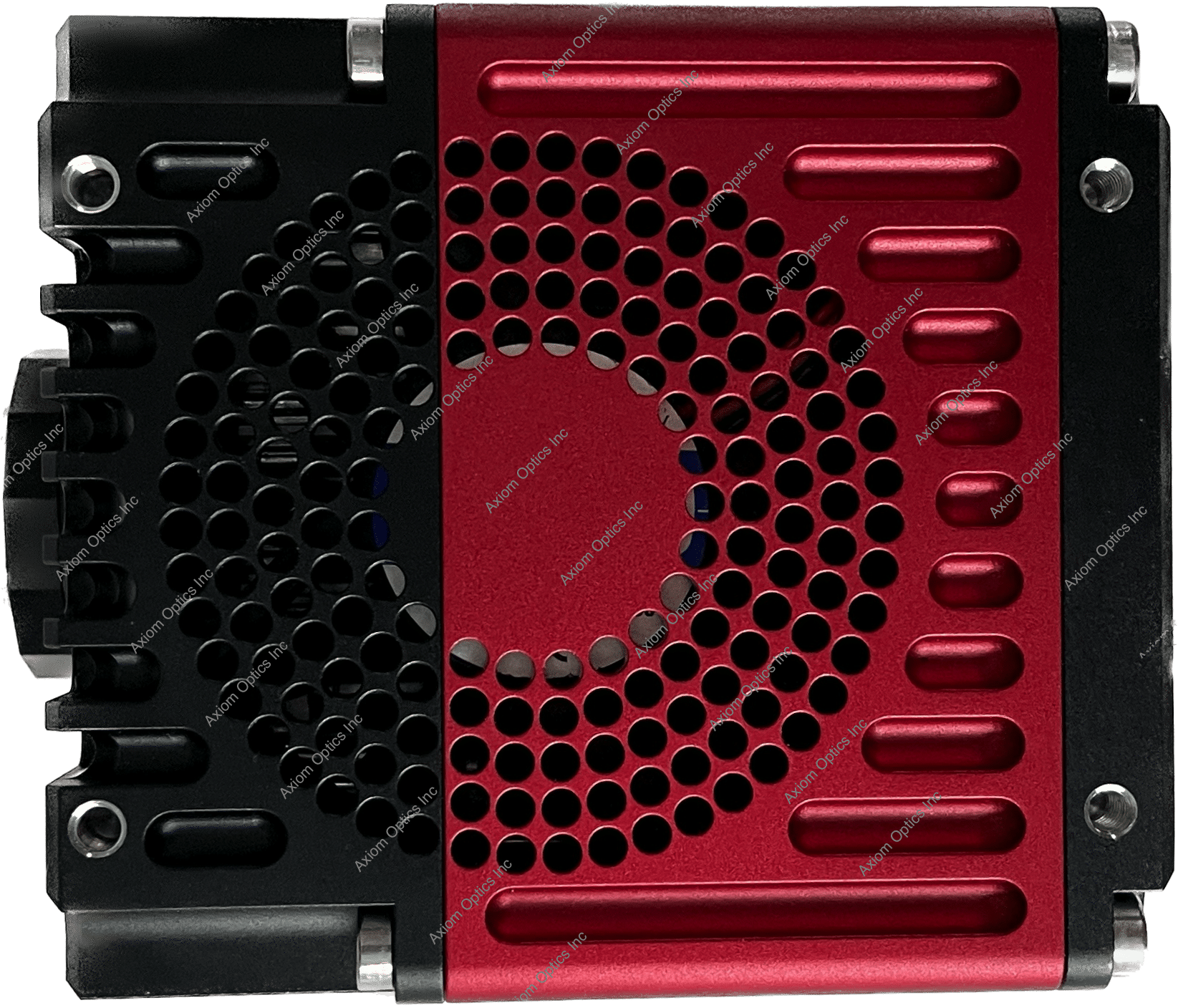
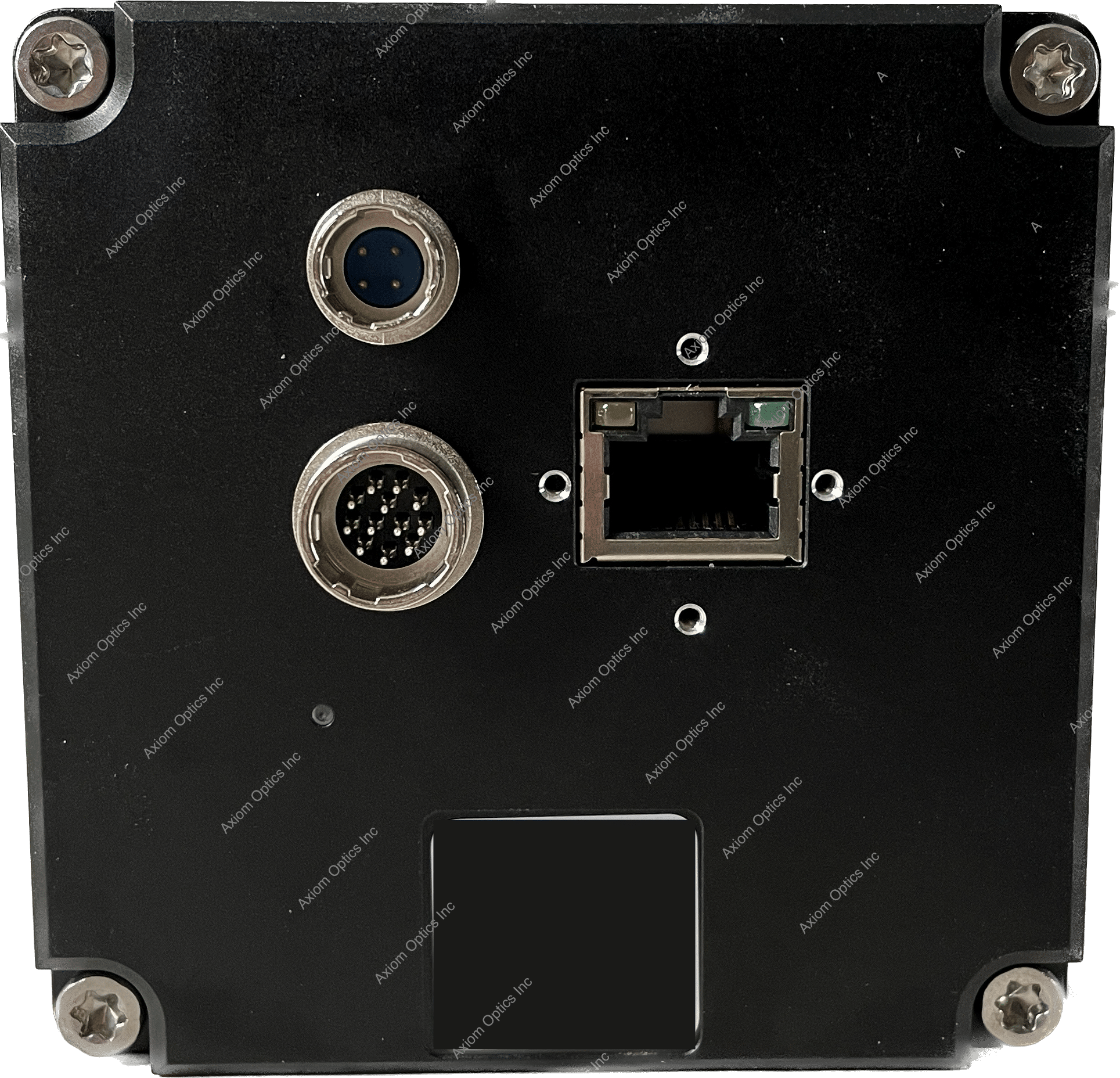
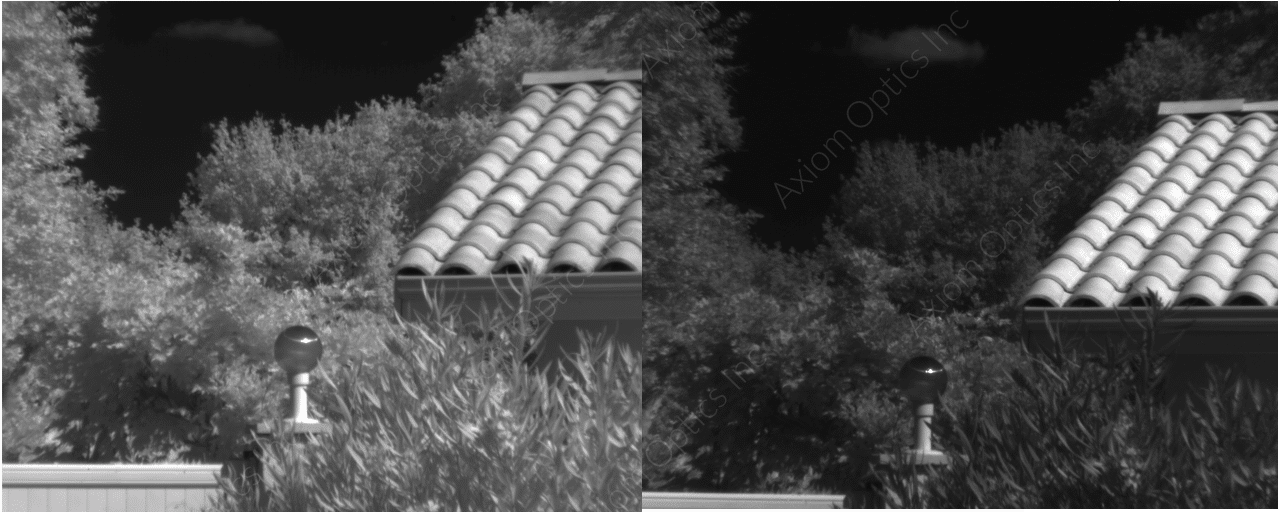 />/>/>alt=”comparison between ingaas and extended range ingaas” width=”1280″ height=”512″ />
/>/>/>alt=”comparison between ingaas and extended range ingaas” width=”1280″ height=”512″ /> 
